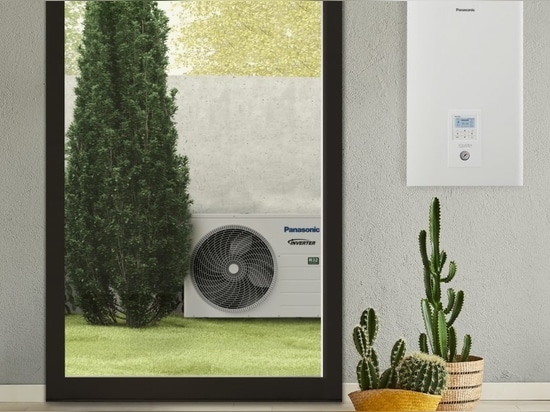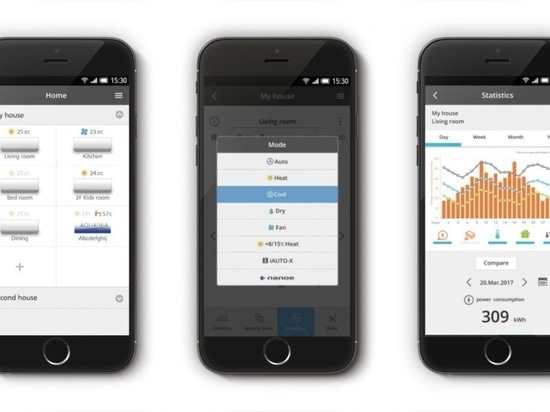
#Industry News
Future Living© Berlin, a Smart Housing Project with a Climate Neutral Agenda
Since the spring of 2020, Berlin residents have been moving into an apartment complex that reduces CO2 emissions and incorporates connected technology, IoT, into daily life.
Since technological advancements have made smart homes and smart cities possible, “smart” living spaces have become a large part of the political agenda, backed by the notion that such housing projects can lower our carbon footprint.
Investor company GSW Sigmaringen, the real estate company that adapts living spaces to people’s age requirements, sits behind one of Germany’s first smart city projects, the Future Living© Berlin—a smart complex with 90 apartments, 10 commercial units and an exhibition area with a cafeteria.
“The housing industry is one of the major CO2 producers,” Birgid Eberhardt, the head of Smart Home of a leading house building company at GSW Sigmaringen, said in a virtual press conference, explaining the reason behind the political agenda for climate-neutral housing.
“Politics are increasing the pressure on us to build houses that are using less energy and heating. Fundings are responsible for how we build houses, so the access to funds is really dependent on our climate neutrality,” Eberhardt stated.
In efforts to help decarbonize society, Future Living© Berlin uses locally generated energy to contribute positively to the ecological climate.
Heat Pumps on the Rise
With the recent European Green Deal, support and investments in sustainable resources are growing, aiming for a climate-neutral European economy by 2050. When compared to fossil fuel burners, the CO2 emissions of heat pumps are next to nothing. It’s why the heat pump market has undergone double-digit growth over the past four years, and the European market for heat pumps is expected to double by 2024.
“Gas heating systems produce about 20 times as much Co2,” Panasonic Managing Director Enrique Vilamitjana said in the virtual press conference plenary session.
Statistically, 1,91 t Co2/year with traditional oil heating, and only 0,08 t Co2/year with the heat pump by Panasonic, a partner in the Future Living Berlin project.
The heat pumps can be used for a number of aspects including space heating, underfloor heating, and warm water generation, as well as cooling for the summer season. They can be controlled by digital cloud-based technology for remote maintenance, which becomes beneficial during times like a pandemic, when in-person maintenance visits may be unsafe.
Energy Storage Batteries and PV Panels
In addition to heat pumps, Future Living© Berlin uses energy storage batteries and PV (photovoltaic) panels.
Partnering with the German energy company, Polarstern, Future Living© Berlin’s design is focused on working with local energy generation and sustainable sources to become carbon neutral.
“If we really want to fight climate change, we really need the energy transition. It’s the duty of our generation and it’s our most important challenge. We have the technology, we have the knowledge, and we have the resources; we just have to do it,” CEO of Polarstern Florian Henle said in the virtual press conference.
Future Living© Berlin also supplies residents with shared electric cars, stored on the premises and available for rental use. The electric cars have charging stations on-site, helping to reduce CO2 emissions when compared to the use of personal fossil-fuel driven vehicles.
The possibility of living in this Berlin smart city can be reached by people of all income, with high-quality living at an affordable rental price, and energy costs reduced by more than 15%.
With residents already moving into Future Living© Berlin, this environmentally friendly neighborhood has provided an intelligent and local energy-based model for the future of Smart living in Europe.
The Connected Side of ‘Smart’
Future Living© is characterized by its multiple “houses” or networked buildings, placed asymmetrically on the land and naturally built and furnished. Because of its universal design, the model can be used for either residential living as well as commercial city quarters.
The built-in technology features lights, loudspeakers, presence detectors and various online services, either controlled by voice-activation or with the use of an app, serving as a completely intelligent environment.
The project is in collaboration with Panasonic, using the blueprint of Panasonic’s previous work in the development of Smart Cities Fujisawa and Tsunashima in Japan.
The intelligent equipment, provided by Panasonic, monitors residents, and collects data, individualizing each apartment to the owner’s needs and daily routine. The incorporation of smart technology in one’s home is meant to provide comfort, security, support, and improve time efficiency in everyday life.







